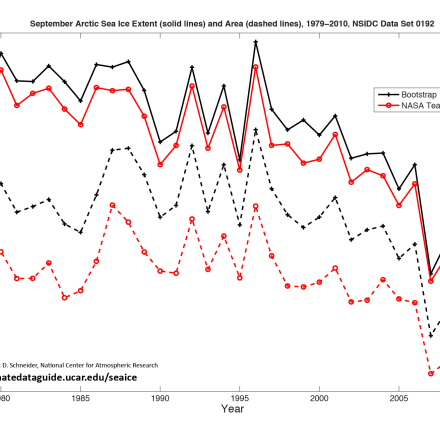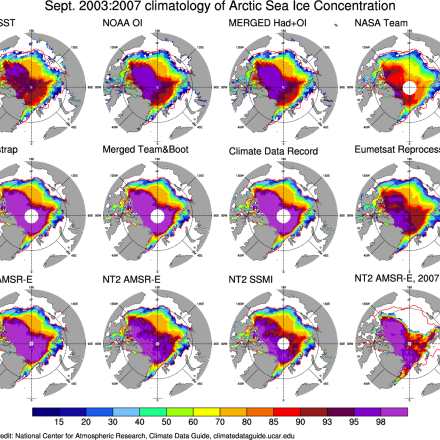Summary of sea ice concentration datasets
| Name | Snapshot | Source | Domain | Years of record | Timestep | Spatial Resolution | Formats | Input Data |
|---|---|---|---|---|---|---|---|---|
| CERA-20C: ECMWF's Coupled Ocean-Atmosphere Reanalysis of the 20th Century | 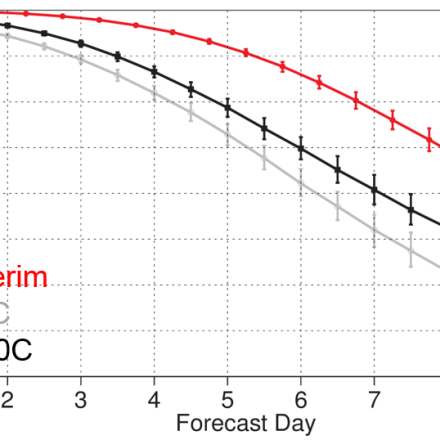
|
ECMWF | Global | to | Sub-daily, Daily, Monthly | ~ 125km; 160 x 320; 91 model levels/ 37 pressure levels / 16 potential temperature levels, and the 2 PVU potential vorticity level | netCDF, GRIB | Surface pressures and mean sea level pressures from ISPDv3.2.6 and ICOADSv2.5.1. Surface marine winds from ICOADSv2.5.1. Sea surface temperature from HadISST2. Temperature and salinity profiles from EN4. |
| Merged Hadley-NOAA/OI Sea Surface Temperature & Sea-Ice Concentration (Hurrell et al, 2008) | 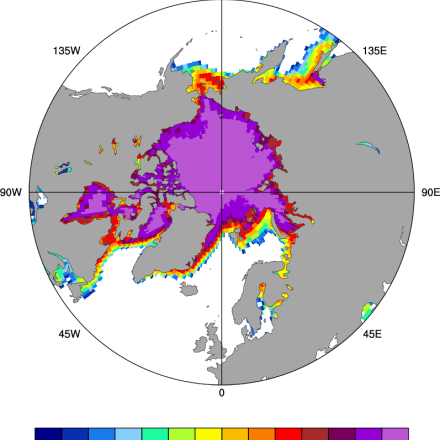
|
NCAR / James Hurrell, Adam Phillips, Dennis Shea | Global, Antarctic, Arctic, NH - Northern Hemisphere, SH - Southern Hemisphere | to | Monthly | 1° x 1° | netCDF | HadISST 1870-Nov 1981; NOAA OI Dec 1981-present |
| NSIDC Sea Ice Index | 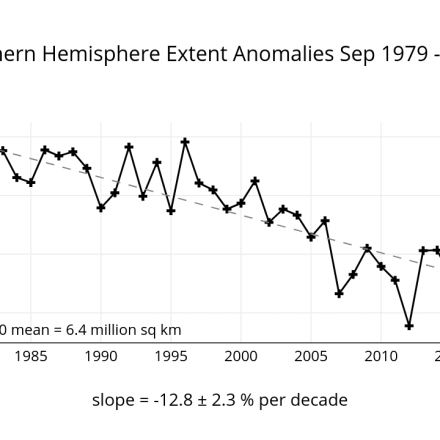
|
National Snow and Ice Data Center | Antarctic, Arctic | to | Daily, Monthly | 25km x 25km | ascii, csv, GeoTIFF, Image, shapefile | |
| Sea Ice Concentration Climate Data Record from OSI SAF | 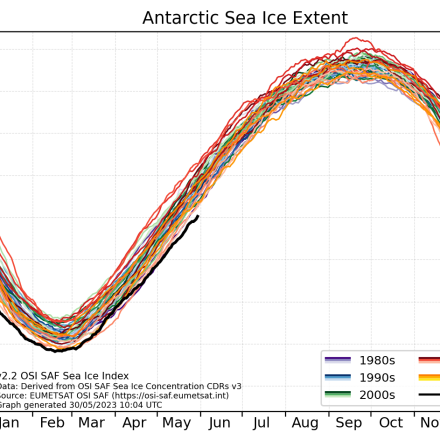
|
Norwegian Meteorological Institute , Danish Meteorological Institute | Antarctic, Arctic, NH - Northern Hemisphere, SH - Southern Hemisphere | to | Daily | 25 x 25 km | netCDF | SMMR and SSM/I |
| Sea Ice Concentration data from AMSR-E, AMSR2 & SSMIS, U Bremen and U Hamburg ASI algorithm | 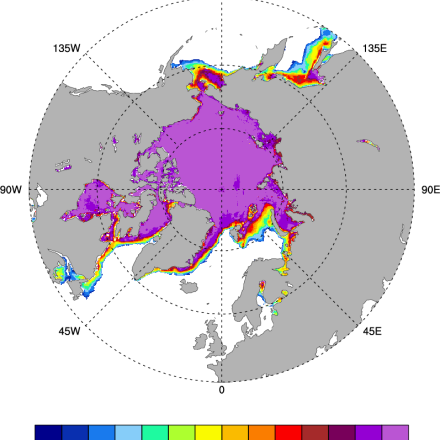
|
Lars Kaleschke - CLiSAP (Hamburg, Germany) , Stefan Kern - CliSAP (Hamburg, Germany) , Gunnar Spreen - JPL | NH - Northern Hemisphere, SH - Southern Hemisphere, Antarctic, Arctic | to | Daily | 6.25 x 6.25 km | netCDF, HDF, GeoTIFF | AMSR-E 89 GHz channel; separate data from SSMIS; planned AMSR-2 |
| Sea Ice Concentration data from HadISST | 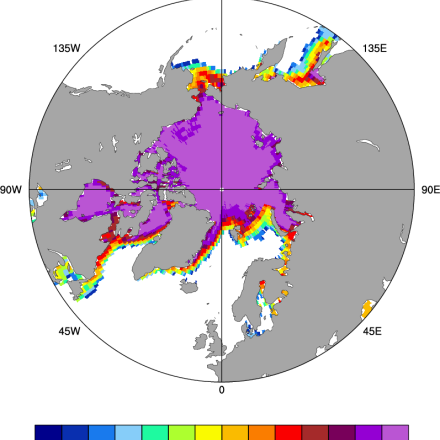
|
UK Met Office Hadley Center / N. Rayner and others | Antarctic, Arctic, NH - Northern Hemisphere, SH - Southern Hemisphere | to | Monthly | 1° x 1° | netCDF, ascii | numerous sea ice charts, Walsh and Chapman sea ice (NH), adjusted passive microwave sea ice |
| Sea Ice Concentration data from NASA Goddard and NSIDC based on Bootstrap algorithm | 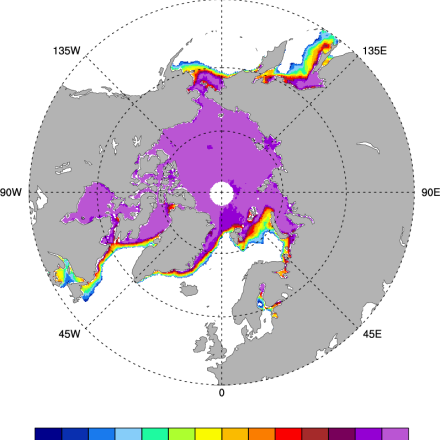
|
NASA Goddard / Joesefino Comiso , NSIDC | Antarctic, Arctic, NH - Northern Hemisphere, SH - Southern Hemisphere | to | Daily, Monthly | 25 x 25 km | netCDF, binary | SMMR, SSMI, SSMI/S, AMSR-E |
| Sea Ice Concentration data from NASA Goddard and NSIDC based on NASA Team algorithm | 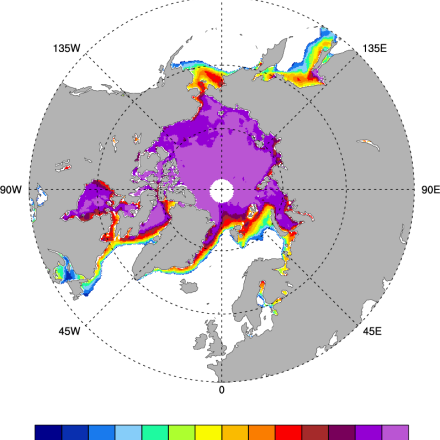
|
NASA Goddard / Donald Caveleri, Claire Parkinson and others , NSIDC | Antarctic, Arctic, NH - Northern Hemisphere, SH - Southern Hemisphere | to | Daily, Monthly | 25 x 25 km | netCDF, binary | SMMR, SSMI, SSMI/S |
| Sea Ice Concentration data from NASA Goddard and NSIDC using AMSR-E and NASA TEAM2 (NT2) algorithm | 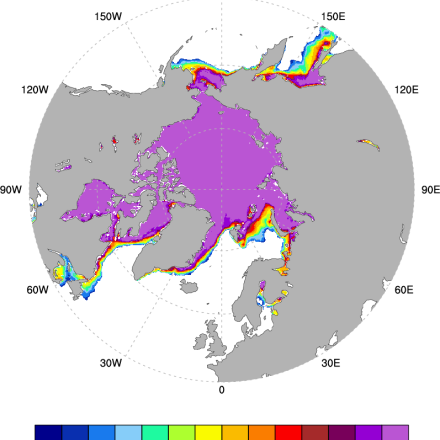
|
NASA Goddard / Donald Caveleri, Thorsten Markus and Josefino Comiso , NSIDC | Antarctic, Arctic | to | Daily | 12.5x12.5 Km or 25x25km | HDF-EOS | AMSR-E brightness temperatures |
| Sea ice concentration data from NASA Goddard based on SSMI and NASA Team (NT2) algorithm | 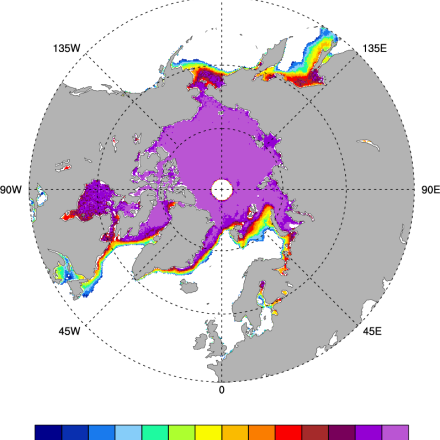
|
NASA Goddard | T. Markus; D. Cavalieri | Antarctic, Arctic | to | Daily | 25 x 25 km | binary | SSMI: multiple channels |
| Sea Ice Concentration data from NOAA OI | 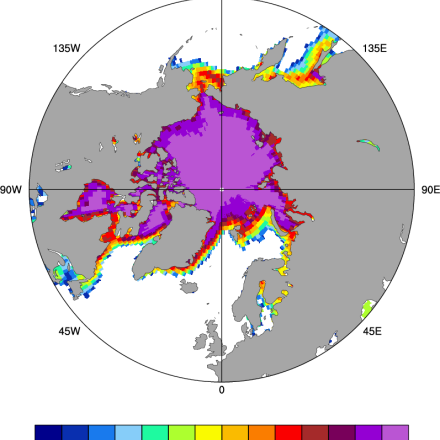
|
NOAA / Richard Reynolds and others | Antarctic, Arctic, NH - Northern Hemisphere, SH - Southern Hemisphere | to | Monthly, Weekly | 1° x 1° | netCDF | adjusted passive microwave -derived sea ice from NASA Goddard and NCEP operations |
| Sea Ice Concentration: NOAA/NSIDC Climate Data Record | 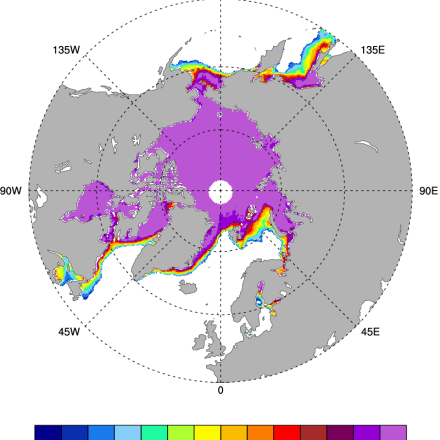
|
NSIDC: Ruth Duerr (Co-I), Florence Fetterer (Co-I), Julienne Stroeve (Co-I) , NASA: Walt Meier (PI) | Antarctic, Arctic, NH - Northern Hemisphere, SH - Southern Hemisphere | to | Daily, Monthly | 25 x 25 km | netCDF | SSMI using NASA Team or Bootstrap |
| SST data: NOAA High-resolution (0.25x0.25) Blended Analysis of Daily SST and Ice, OISSTv2 | 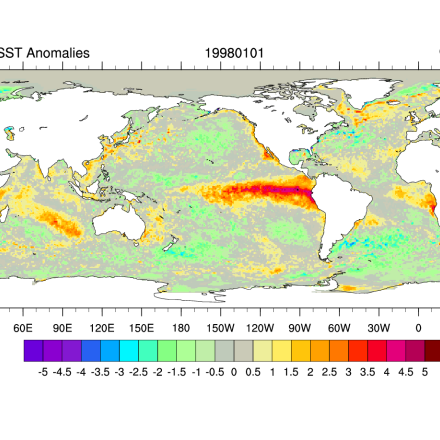
|
NOAA NCDC/Richard Reynolds | Global | to | Daily | 0.25°x0.25° | netCDF, binary | ships, bouys, large-scale adjustment of satellite biases, AVHRR, AMSRE |
| Walsh and Chapman Northern Hemisphere Sea Ice | John Walsh (U Illinois) , Bill Chapman (U. Illinois) | NH - Northern Hemisphere, Arctic | to | Monthly | 1° x 1° | ascii | historical charts, switching to SMMR & SSM/I in 1978 |
